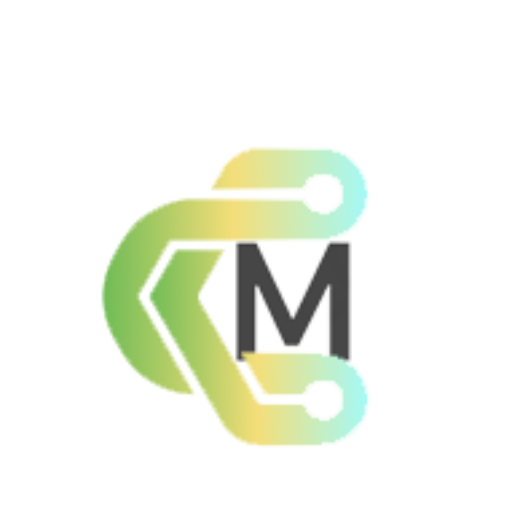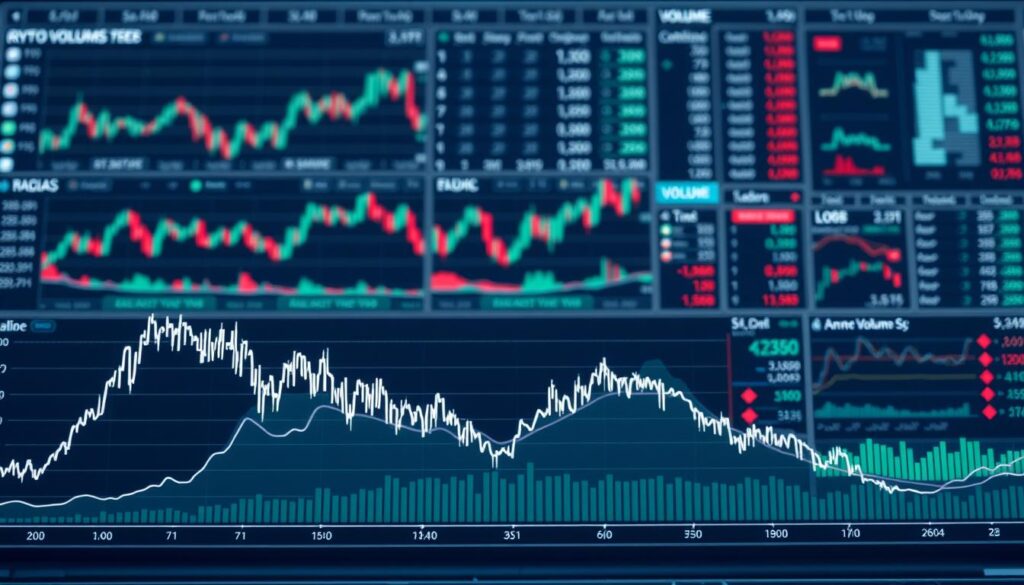Now Reading: Cardano (ADA): A Revolutionary Blockchain Platform
- 01
Cardano (ADA): A Revolutionary Blockchain Platform
Cardano (ADA): A Revolutionary Blockchain Platform

In the rapidly evolving world of blockchain technology, Cardano emerges as a trailblazer, offering a revolutionary platform that is poised to transform the landscape of decentralized applications (dApps), smart contracts, and the broader cryptocurrency ecosystem. Developed by Input Output Hong Kong (IOHK), Cardano is a next-generation blockchain network that prioritizes scalability, sustainability, and interoperability, with the ultimate goal of creating a more secure, transparent, and inclusive financial system.
At the core of Cardano’s innovation lies its unique Proof-of-Stake (PoS) consensus mechanism, known as Ouroboros, which provides a robust and energy-efficient alternative to the traditional Proof-of-Work (PoW) model used by blockchains like Bitcoin and Ethereum. This revolutionary approach not only enhances the platform’s scalability but also significantly reduces its environmental impact, making Cardano a more sustainable and environmentally-friendly blockchain solution.
Cardano’s commitment to governance and decentralization is another key aspect of its design. The platform employs a unique governance model that empowers its community to actively participate in the decision-making process, ensuring that the development and evolution of Cardano remain aligned with the collective vision of its stakeholders. This inclusive approach fosters a strong sense of community ownership and promotes long-term sustainability.
As Cardano continues to evolve, its ecosystem is poised to unlock the full potential of blockchain technology, enabling the development of sophisticated smart contracts and a wide range of decentralized applications (dApps) that cater to diverse industries and use cases. From decentralized finance (DeFi) to non-fungible tokens (NFTs), Cardano’s versatility and interoperability make it an attractive choice for developers and businesses seeking to leverage the power of Web3 technologies.
Key Takeaways
- Cardano is a next-generation blockchain platform that prioritizes scalability, sustainability, and interoperability.
- Ouroboros, Cardano’s Proof-of-Stake (PoS) consensus mechanism, offers a more energy-efficient and scalable alternative to traditional Proof-of-Work (PoW) models.
- Cardano’s unique governance model empowers its community to participate in decision-making, fostering a sense of ownership and long-term sustainability.
- Cardano’s ecosystem enables the development of sophisticated smart contracts and a wide range of decentralized applications (dApps), including in the areas of decentralized finance (DeFi) and non-fungible tokens (NFTs).
- Cardano’s focus on interoperability allows it to bridge the gap with other blockchain networks, enhancing the overall functionality and adoption of its platform.
Introduction to Cardano (ADA)
Cardano is a revolutionary blockchain platform that has been shaking up the cryptocurrency world since its launch in 2017. This third-generation blockchain network is designed to address the limitations of earlier blockchain technologies, focusing on scalability, interoperability, and sustainability.
At the heart of Cardano is its native cryptocurrency, ADA, which serves as the primary means of transaction and powering the network. Cardano’s innovative approach to blockchain technology has garnered significant attention from the cryptocurrency community, with its strong emphasis on security, transparency, and democratic governance.
One of the key features that sets Cardano apart is its advanced proof-of-stake consensus mechanism, known as Ouroboros. This energy-efficient protocol ensures the network’s scalability and sustainability, making it a viable alternative to the energy-intensive proof-of-work systems employed by earlier blockchain networks.
“Cardano is a third-generation blockchain platform that was launched in 2017. It is designed to address the scalability, interoperability, and sustainability challenges faced by earlier blockchain networks.”
Cardano’s commitment to innovation extends beyond its technical architecture; the platform also features a unique governance model that empowers the community to actively participate in the network’s evolution and decision-making processes. This democratic approach to platform development is a key differentiator for Cardano, setting it apart from traditional centralized blockchain networks.
As the cryptocurrency landscape continues to evolve, Cardano’s focus on sustainability, scalability, and transparency positions it as a promising contender in the race to deliver reliable and secure financial services on a global scale.
The Innovative Proof-of-Stake Consensus Mechanism
Cardano’s revolutionary Proof-of-Stake (PoS) consensus mechanism, known as Ouroboros, is the driving force behind this innovative blockchain platform. Unlike the energy-intensive Proof-of-Work (PoW) used by networks like Bitcoin, Ouroboros is designed to be more energy-efficient and scalable, allowing Cardano to process transactions faster and with lower fees.
Ouroboros: The Driving Force Behind Cardano
Ouroboros is a groundbreaking PoS protocol that addresses the shortcomings of traditional PoW systems. By using a more efficient consensus mechanism, Ouroboros enables Cardano to achieve high levels of energy efficiency and scalability. This makes the network more sustainable and able to handle a larger number of transactions without compromising performance.
Energy Efficiency and Scalability
- Ouroboros’ PoS approach significantly reduces the energy consumption compared to PoW, making Cardano a more environmentally friendly blockchain solution.
- The scalability of Ouroboros allows Cardano to process transactions quickly and with low fees, making it a viable option for a wide range of decentralized applications (dApps).
- Continuous improvements to the Ouroboros protocol have further enhanced the energy efficiency and scalability of the Cardano network, positioning it as a leader in the blockchain industry.
“Ouroboros is a groundbreaking innovation that sets Cardano apart in the blockchain landscape, delivering on the promises of Proof-of-Stake for increased energy efficiency and scalability.”
Cardano’s Unique Approach to Governance
At the heart of the Cardano ecosystem lies its innovative and decentralized governance model. Unlike traditional centralized systems, Cardano empowers its community to shape the platform’s future through an inclusive decision-making process.
The platform’s governance structure revolves around “voting delegates” who represent the interests of ADA holders. These delegates are responsible for proposing and voting on various improvements, ensuring that the decentralization of the network remains a top priority.
This decentralized approach to governance allows for broader participation from the Cardano community, fostering a sense of ownership and empowerment. As a result, the development of the platform is driven by the needs and aspirations of its users, rather than a centralized authority.
By embracing this decentralized approach to governance, Cardano aims to set a new standard for blockchain-based platforms, where the community plays a pivotal role in shaping the future of the network.
Smart Contracts and Decentralized Applications (dApps)
Cardano’s blockchain platform is designed to revolutionize the world of smart contracts and decentralized applications (dApps). At the heart of this innovation is Plutus, Cardano’s purpose-built programming language that enables developers to create secure and scalable dApps.
Plutus: Cardano’s Smart Contract Language
Plutus is a functional programming language that is specifically tailored for the Cardano blockchain. It offers a robust and efficient way to develop smart contracts, allowing for the creation of complex and customizable agreements that automatically execute when predetermined conditions are met.
The beauty of Plutus lies in its ability to ensure the security and reliability of smart contracts. By leveraging Cardano’s Proof-of-Stake consensus mechanism, Plutus-based smart contracts are designed to be highly resilient and resistant to malicious attacks, making them an attractive choice for a wide range of decentralized applications.
Unleashing the Potential of dApps
The integration of Plutus with the Cardano blockchain opens up a world of possibilities for the development of decentralized applications. Developers can now build innovative solutions across various industries, including finance, supply chain management, and digital identity.
These dApps leverage the power of Cardano’s blockchain to provide secure, transparent, and decentralized services, empowering users and businesses alike. As the Cardano ecosystem continues to grow, the potential for transformative dApps built on Plutus is truly limitless.
“Plutus is a game-changer for the Cardano ecosystem, unlocking the full potential of smart contracts and decentralized applications. This powerful programming language is paving the way for a new era of innovation on the Cardano blockchain.”
Cardano (ADA) and Decentralized Finance (DeFi)
The Cardano blockchain is well-suited for the development of decentralized finance (DeFi) applications. Cardano’s robust security, scalability, and interoperability features make it an attractive option for building DeFi solutions, such as decentralized lending, borrowing, and trading platforms.
One of the key advantages of Cardano in the DeFi space is its energy-efficient Proof-of-Stake consensus mechanism, Ouroboros. This consensus protocol ensures high transaction throughput and low energy consumption, making Cardano an eco-friendly choice for DeFi applications.
Furthermore, Cardano’s smart contract capabilities, powered by the Plutus programming language, enable the creation of sophisticated DeFi protocols and decentralized applications (dApps). Developers can leverage Cardano’s robust security and scalability to build innovative financial solutions that challenge traditional banking and investment models.
The Cardano (ADA) ecosystem is actively exploring the integration of decentralized finance use cases, aiming to provide users with a secure and transparent alternative to centralized financial services. As the DeFi landscape continues to evolve, Cardano’s unique features position it as a promising platform for the development of the next generation of decentralized financial applications.
Interoperability: Bridging the Gap with Other Blockchains
One of Cardano’s standout features is its commitment to interoperability, allowing seamless integration and data exchange with other blockchain networks. A key aspect of this is the platform’s Ethereum Virtual Machine (EVM) compatibility, which enables developers to port existing Ethereum-based decentralized applications (dApps) onto Cardano’s network.
Ethereum Virtual Machine (EVM) Compatibility
By offering EVM compatibility, Cardano empowers developers to leverage its superior performance and security without having to completely rewrite their applications. This interoperability opens up a world of possibilities, as developers can now tap into Cardano’s robust infrastructure and take advantage of its advanced interoperability capabilities.
The integration of the Ethereum Virtual Machine (EVM) on Cardano’s network is a game-changer, as it allows for the seamless migration of existing Ethereum-based dApps onto the Cardano blockchain. This not only enhances the platform’s overall capabilities but also drives wider adoption and utilization of the Cardano ecosystem.

“Cardano’s EVM compatibility is a significant step towards truly interconnected blockchain ecosystems, paving the way for greater collaboration and innovation across the industry.”
By bridging the gap between different blockchain networks, Cardano’s interoperability features position it as a powerful platform capable of fostering a more connected and collaborative decentralized landscape. As the blockchain space continues to evolve, Cardano’s commitment to interoperability will likely play a crucial role in driving widespread adoption and unlocking new opportunities for developers and users alike.
Non-Fungible Tokens (NFTs) on Cardano
Cardano’s blockchain offers a robust platform for the creation and management of non-fungible tokens (NFTs), which are unique digital assets that can represent a wide range of items, from digital art to virtual real estate. With its focus on scalability and low transaction fees, Cardano has emerged as an attractive option for developers and creators looking to explore the world of digital collectibles.
Exploring the World of Digital Collectibles
The Cardano blockchain provides a versatile environment for the development and deployment of NFTs. These unique digital assets can be used to represent ownership of virtual items, such as artwork, music, or even virtual real estate. The platform’s advanced features, including its Plutus smart contract language, enable the creation of sophisticated NFT applications and marketplaces.
One of the key advantages of the Cardano network is its focus on energy efficiency and scalability. This makes it an attractive option for NFT projects, as it allows for the minting and trading of digital collectibles at a lower environmental impact and with faster transaction times compared to other blockchain networks.
| Feature | Cardano | Ethereum |
|---|---|---|
| Consensus Mechanism | Proof-of-Stake | Proof-of-Work |
| Transaction Fees | Low | High |
| Scalability | High | Limited |
| Energy Efficiency | High | Low |
As the adoption of non-fungible tokens continues to grow, the Cardano network is poised to play a significant role in shaping the future of digital collectibles and the broader NFT ecosystem.
“Cardano’s focus on scalability and energy efficiency makes it an attractive platform for the development and trading of non-fungible tokens.”
The Road Ahead: Cardano’s Future Developments
The Cardano blockchain platform has become a trailblazer in the world of cryptocurrency and decentralized technologies. As the project continues to evolve, its development roadmap is focused on consistently improving the platform’s capabilities and expanding its diverse ecosystem. Cardano’s future holds an array of exciting initiatives that aim to solidify its position as a leading blockchain solution.
One of the key areas of focus for Cardano’s future developments is the implementation of sidechains. Sidechains are separate blockchains that operate alongside the main Cardano blockchain, offering increased scalability, interoperability, and the ability to experiment with new features without disrupting the core network. This approach allows Cardano to address the growing demand for decentralized applications (dApps) and decentralized finance (DeFi) solutions, while maintaining the platform’s renowned security and sustainability.
Additionally, Cardano is actively exploring the integration of decentralized identity (DID) solutions, which empower individuals to have greater control over their personal data and digital identities. This aligns with the project’s commitment to empowering individuals and promoting decentralization across various sectors, from finance to supply chain management and renewable energy.

As Cardano continues to evolve, the platform’s development team is dedicated to exploring a wide range of use cases that leverage the blockchain’s unique capabilities. From streamlining supply chain operations to enabling peer-to-peer renewable energy trading, Cardano’s future holds the potential to revolutionize various industries and positively impact communities around the world.
By staying true to its principles of transparency, security, and sustainability, Cardano is poised to play a pivotal role in shaping the future of blockchain technology and the decentralized economy. The platform’s commitment to ongoing innovation and its collaborative approach to ecosystem development make it an increasingly attractive choice for developers, businesses, and individuals seeking a reliable and forward-thinking blockchain solution.
Conclusion
Cardano, the revolutionary blockchain platform, has emerged as a promising solution to the challenges faced by earlier blockchain networks. With its innovative Proof-of-Stake consensus mechanism, Cardano offers unparalleled energy efficiency and scalability, paving the way for wider adoption of decentralized technology.
The platform’s commitment to interoperability and robust smart contract capabilities, powered by the Plutus programming language, have positioned Cardano as a hub for the development of decentralized applications (dApps) and the burgeoning Decentralized Finance (DeFi) ecosystem. As the Cardano ecosystem continues to evolve, it holds immense potential in bridging the gap between traditional finance and the digital asset landscape.
As the Cardano (ADA) cryptocurrency and its underlying blockchain technology gain traction, it is poised to play a pivotal role in shaping the future of the blockchain and cryptocurrency industry. With its strong focus on sustainability, scalability, and user-centric design, Cardano stands as a beacon of innovation, offering a compelling alternative to the existing landscape of blockchain solutions.
FAQ
What is Solana?
Solana is a high-performance, open-source blockchain platform that aims to provide scalable, secure, and fast decentralized applications (dApps). It was launched in 2020 and is designed to address the scalability challenges faced by earlier blockchain networks.
What makes Solana unique?
Solana’s key innovation is its Proof-of-History (PoH) consensus mechanism, which is a distributed clock that enables the network to achieve high throughput and low latency. This, combined with its unique architecture, allows Solana to process transactions at a significantly faster rate compared to other blockchain platforms.
How does Solana’s Proof-of-History work?
Proof-of-History is a time-keeping mechanism that uses a cryptographic clock to record the passage of time between events. This allows Solana to order transactions without the need for an explicit consensus step, reducing the time required to reach agreement and increasing the overall transaction throughput.
What is the native cryptocurrency of Solana?
The native cryptocurrency of Solana is SOL. SOL is used for transactions, paying network fees, and as a means of powering the Solana ecosystem.
What kind of applications can be built on Solana?
Solana’s high-performance capabilities make it well-suited for a wide range of decentralized applications (dApps), including decentralized finance (DeFi) platforms, non-fungible token (NFT) marketplaces, gaming applications, and more. The platform’s Ethereum Virtual Machine (EVM) compatibility also allows developers to port existing Ethereum-based dApps to Solana.
How does Solana compare to Ethereum?
Solana is often compared to Ethereum, as both platforms are used for building decentralized applications. However, Solana is designed to be significantly more scalable and faster than Ethereum, with the ability to process thousands of transactions per second. Solana’s Proof-of-History consensus mechanism is a key differentiator, allowing it to achieve higher throughput and lower transaction fees compared to Ethereum’s Proof-of-Work protocol.
What is the future of Solana?
Solana is positioning itself as a leading blockchain platform in the Web3 ecosystem, with a strong focus on scalability, speed, and developer-friendly features. The platform continues to expand its ecosystem, with ongoing developments in areas such as decentralized finance (DeFi), non-fungible tokens (NFTs), and various other decentralized applications. As the demand for high-performance blockchain solutions grows, Solana is well-positioned to play a significant role in the future of the decentralized technology landscape.
















